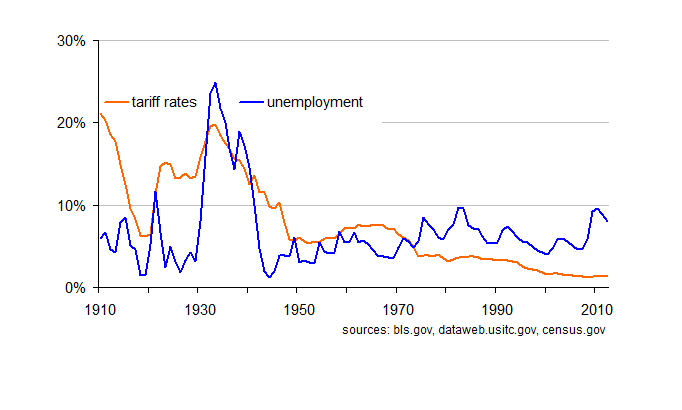I don’t really see that in the graph, if you know the underlying history. For instance, though tariffs were high but declining in 1910, unemployment was mediocre. Then there was a burst of unemployment after WWI, and tariffs increased while unemployment then declined.
Then the massive jump in unemployment of the Great Depression, followed by the Smoot-Hawley Tariff Act, that seemed to cause unemployment to drop. But credit to the big drop in unemployment there comes from the New Deal, in which tariffs mattered little to government make work projects. And unemployment really slammed down with WWII.
Beyond that there doesn’t seem to be much correlation, other than a slow decline in tariffs and a slow increase in unemployment.

...the massive jump in unemployment of the Great Depression, followed by the Smoot-Hawley Tariff Act, that seemed to cause unemployment to drop...
Let's look together at the high and increasing tariffs from the '20's into the '30's that preceded the Depression. Then we see in the '30's how unemployment fell with tariffs being rolled back. Finally we see the period of low tariffs after 1950 coinciding with an era of low unemployment. In fact, before 1950 with average tariffs over 13% we had an average unemployment rate over 8%, but after 1950 with average tariffs of 4% we had average unemployment below 6%.
